NRR:河南大学魏建设团队报道响应衰老和过度炎症下小胶质细胞在神经退行性疾病中的双重作用
撰文:韩婷婷,徐煜翔
神经退行性疾病是一种常见的中枢神经系统疾病,由衰老、氧化应激、炎症、异常蛋白积聚、兴奋性毒性和金属过度暴露等因素引起,其特征是中枢神经系统中特定区域的神经元变性和死亡[1, 2]。其中,细胞衰老和响应衰老的慢性炎症作为大脑老化的信号,对衰老进程影响很大,也是诱发神经退行性变的主要风险因素[3, 4]。小胶质细胞作为中枢神经系统常驻的巨噬细胞,与大脑中炎症性疾病的发病机制有关,且在神经退行性疾病发生发展中发挥重要的作用[5]。值得注意的是,在神经退行性疾病中,响应衰老和大脑微环境变化的小胶质细胞也发挥着神经毒性作用,其降低了小胶质细胞的吞噬作用,进而降低其对神经元的保护作用,且通过分泌促炎因子导致神经炎症发生,进一步促进异常蛋白积累增加,加速神经变性,放大神经元损伤,加速神经退行性疾病的进程[6, 7]。调节小胶质细胞不同功能状态的转化,使其从神经毒性状态向神经保护性状态改变,可减轻神经炎症对神经元的伤害,缓解神经退行性疾病发展进程[8, 9]。然而响应衰老和过度炎症的小胶质细胞如何影响神经退行性疾病的发生进展的机制还未明确。回顾响应衰老和神经炎症的小胶质细胞对神经退行性疾病的影响有助于帮助理解小胶质细胞在神经退行性疾病中的重要性。
最近,中国河南大学魏建设团队在《中国神经再生研究(英文版)》(Neural Regeneration Research)上发表了题为“Microglial response to aging and neuroinflammation in the development of neurodegenerative diseases”的综述。该综述阐述了小胶质细胞的来源和功能,重点介绍了在机体衰老过程中,响应衰老和过度炎症下的不同状态的小胶质细胞对神经退行性疾病,包括在阿尔茨海默病、亨廷顿舞蹈病、帕金森病发生发展的作用,同时描述了调控不同功能状态的小胶质细胞对神经退行性疾病治疗的潜在益处。此外还列举了一些靶向调节小胶质细胞功能状态的药物,这些药物可通过调节不同功能状态的小胶质细胞比例失衡的现象,促进神经元存活,进而成为神经退行性疾病治疗的潜在靶点。总之,在衰老和过度炎症导致的神经退行性疾病中,诱导小胶质细胞状态由神经毒性到神经保护性的转变可能对疾病的治疗具有积极的前景,这有望成为延缓及治疗神经退行性疾病发生发展的新靶点。
神经系统退行性疾病是以神经元变性为基础的慢性进行性神经系统疾病,可由神经元或其髓鞘的丧失所致,且随着时间的推移而恶化,导致机体功能障碍。阿尔茨海默病、亨廷顿舞蹈病和帕金森病是典型的神经退行性疾病。流行病学调查研究显示,这些疾病的发病率具有随着年龄的增长而急剧增加的特征。然而,目前对于神经退行性疾病尚无较好的治疗方法,临床常用的药物仍以对症治疗为主。因此准确了解这些疾病的致病机制,可能为开发阻止疾病发生或减缓其进展的药物提供参考。尽管开发有效的治疗方法和干预措施以此减缓疾病的发生进展迫在眉睫,但目前最重要的是考虑衰老和炎症机制在神经退行性疾病发病和进展中的作用,才能对症下药。
当前的研究表明,衰老会驱使大脑细胞出现生物功能受损、突触可塑性降低、神经元异常活动、神经元Ca2+稳态失调以及炎症,而这些变化进一步损伤机体的记忆、学习、认知探索、协调和运动能力[10],并促使衰老的大脑患上神经退行性疾病。作为一种保护机制,炎症反应可通过修复、再生和清除体内受损的组织/细胞或感染因子、寄生虫或毒素,维持大脑内环境稳态[11]。此外,炎症作为细胞衰老及机体老化的伴随反应,也在维持和促进机体衰老中也发挥着重要作用。然而在衰老过程中,机体先天性免疫系统和获得性免疫系统出现损伤,可导致免疫系统功能失衡,使其对病原体、损伤组织及衰老细胞的清除功能发生变化,并引起促炎性细胞因子(如肿瘤坏死因子α,白细胞介素1β、白细胞介素6、白细胞介素8、活性氧、趋化因子配体2、趋化因子配体5等)过度表达,导致炎症反应持续发生[12]。这些因子的长期过度刺激不仅会导致机体处于过度炎性状态,还能诱导神经炎症和神经变性,造成神经元损伤,从而引起或增加与年龄相关的神经退行性变[13, 14]。
小胶质细胞作为大脑内常驻的免疫细胞之一,可介导的神经炎症被认为是导致一些神经退行性疾病的共同途径。正常生理状态下,小胶质细胞可通过自我增殖完成更新[15]。此时细胞状态呈高度分枝状[16],具有三级和四级分枝结构,且细胞间的分枝很少发生重叠。通过建立神经元回路和维持神经元细胞池的动态平衡参与神经发生[17],其释放的细胞因子如肿瘤坏死因子α和干扰素γ),参与调节神经元和其他神经胶质细胞之间的通讯从而动员大脑内其他免疫细胞(如星形胶质细胞)的活化,以此来清除异常物质,参与神经元修复、重塑和突触修剪,支持神经元的存活和分化,从而维持大脑内微环境的稳态[18-20]。当大脑内微环境稳态破坏时,小胶质细胞会积极做出反应,此时小胶质细胞形态会呈现出胞体增大、突起变短、细胞形态呈圆形或杆状现象[21]。此外,小胶质细胞也能分泌一些营养因子,如脑源性神经营养因子信号转导促进突触的形成,与学习和记忆等高级认知功能相关[22],通过突起的末端吞噬海马齿状回颗粒细胞层凋亡的新生神经元,参与到整个神经系统的调控过程。
值得注意的是,在生理背景下,衰老在发育、组织再生和组织重塑中发挥重要作用[23-26],然而随着年龄的增长,不同细胞应激源的积累增加(如氧化应激、DNA损伤和线粒体应激等),导致体内稳态平衡遭到破坏。此时衰老的细胞表现出多重效应,并通过内在和外在两种机制促进组织老化。内在机制上,如果衰老细胞的生长停滞在干细胞区,则可能会损害组织的再生能力,并以非自主的方式促进细胞功能障碍[27, 28];外在机制方面,衰老细胞通过分泌构成衰老相关分泌表型的白细胞介素1β、白细胞介素1α、白细胞介素8、白细胞介素6、趋化因子配体2、血管内皮生长因子、转化生长因子β、纤溶酶原激活剂、基质金属蛋白酶1、3和10加速组织老化(图1) [29]。此外,分泌构成衰老相关分泌表型不仅是衰老的结果,也是衰老的诱导剂,可促进细胞衰老,而衰老的细胞则通过自分泌的方式加速自身及其邻近的细胞的衰老进程,使分泌构成衰老相关分泌表型产生增加,调节衰老细胞的免疫监视,从而改变局部组织环境,可能有助于炎症发生并帮助组织修复和受损细胞的衰老恢复[30-34]。
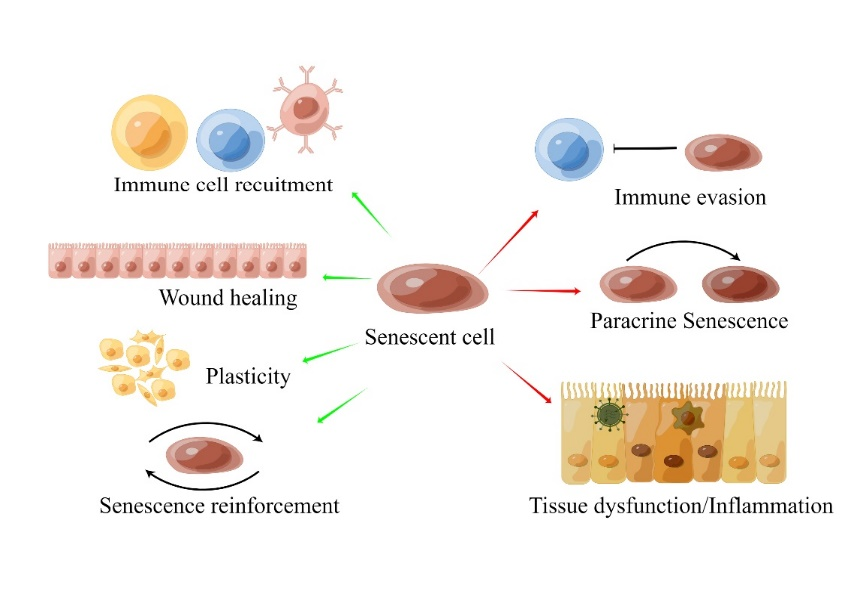
图1衰老细胞的多重效应(图源:Han et al., Neural Regen Res, 2024)
在病理状态下,随着大脑衰老的进程,响应衰老的小胶质细胞存在过度激活的现象,造成大脑内出现过度炎症反应[35]。持续的炎症反应会限制小胶质细胞的有益功能,并通过增加炎性细胞因子的释放,发挥神经毒性作用,抑制神经再生[36]。更重要的是,随着年龄的增长,错误折叠的蛋白质、细胞碎片和其他炎症刺激积聚在脑中,诱导小胶质细胞持续受到刺激,加速衰老进程,而机体衰老水平的增加进一步导致小胶质细胞的吞噬潜能和监视能力下降,引发一个恶性循环,增加对神经元健康有害的炎性物质的产生[37],促进了神经退行性疾病的发生[38]。
在神经退行性疾病中,随着机体逐渐衰老,小胶质细胞发挥重要作用。响应衰老从而导致慢性炎症的小胶质细胞的吞噬作用受损,对神经元的保护作用降低,并通过分泌促炎细胞因子使其自身处于神经毒性状态,促进毒性蛋白积累增加,加速神经变性。另一方面,响应衰老和慢性炎症下的小胶质细胞可释放促炎细胞因子如白细胞介素1β、肿瘤坏死因子α以及诱导型一氧化氮合酶,放大神经炎症,加重神经元损伤,促进神经退行性疾病的发展进程。而神经保护性小胶质细胞可通过释放抗炎细胞因子和营养因子在过敏反应、寄生虫清除、炎症抑制、组织重塑、免疫调节和肿瘤促进中发挥作用,并支持神经元存活,缓解疾病进进程(图2)[39-41]。由于小胶质细胞具有双重效应,所以通过研究小胶质细胞在神经退行性疾病中的作用机制,调控响应周围环境变化导致不同状态的小胶质细胞的转化,限制其对神经元损伤的影响,可能有助于延缓疾病的进程,提高疾病的治疗效果。因此,小胶质细胞有望为治疗神经退行性疾病提供新的治疗策略,并为筛选、研发潜在的候选药物提供新的思路。然而,不同状态的小胶质细胞之间的转化机制,还有待进一步研究。
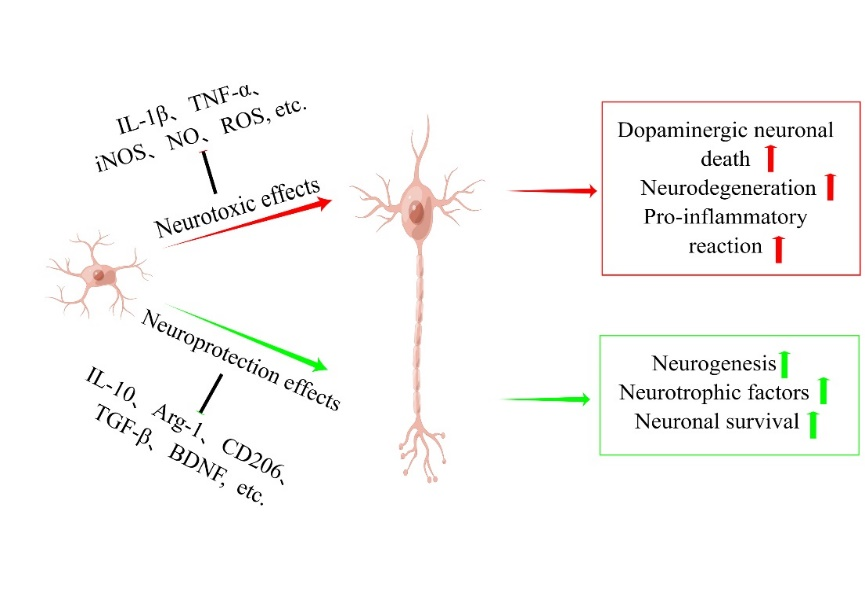
图2不同细胞状态下小胶质细胞的作用(图源:Han et al., Neural Regen Res, 2024)
小胶质细胞的状态与聚集的错误折叠的蛋白密切相关,这些蛋白见于各种神经退行性疾病,包括阿尔茨海默病、亨廷顿舞蹈病和帕金森病。从神经元释放到细胞外空间的聚集的α突触核蛋白、β淀粉样蛋白/tau寡聚物和mHTT可直接诱导小胶质细胞向神经毒性状态转变。在疾病发生阶段,神经保护状态的小胶质细胞主要吞噬细胞碎片,促进组织重建,并产生抗炎因子,试图抑制促炎症反应,维持组织稳态。然而,内源性刺激以及环境毒素持续存在时,使小胶质细胞偏向表现为神经毒性作用,降低自身的吞噬作用,并释放炎性因子,产生神经炎性,最终造成不可逆的神经元丢失,导致疾病发的生发展(图3)。然而通过调控小胶质细胞的状态,可能缓解不同状态的小胶质细胞失衡的现象,减少神经炎症的发生,进一步调节错误折叠的蛋白异常聚集的现象,从而有助于减慢疾病进展,基于此靶点开发药物有望成为调节脑内炎症水平,恢复大脑微环境稳态的有效方法之一。
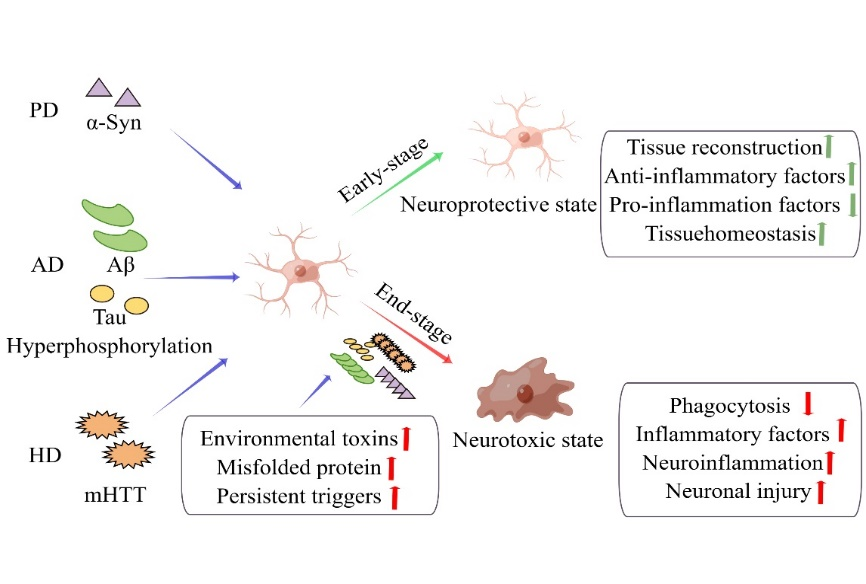
图3小胶质细胞在不同神经退行性疾病中的作用(图源:Han et al., Neural Regen Res, 2024)
响应衰老的小胶质细胞对于神经退行性疾病的发生和进程展现出重要作用。在衰老进程中,神经毒性小胶质细胞提高了大脑内微环境的炎症水平,放大了神经炎症对神经元的损伤作用,从而加重了疾病的病理状况,加快了疾病的进程。同时,通过调控响应周围环境变化导致不同状态的小胶质细胞的转化的现象,提高神经保护性小胶质细胞的比例与活性,可能通过降低神经炎症限制其对神经元损伤的影响,进而有助于延缓疾病的进程,并有望为筛选和研发潜在的候选药物治疗神经退行性疾病提供潜在的治疗策略。然而,不同状态的小胶质细胞之间的转化机制,还有待进一步研究。此外,未能讨论神经退行性疾病的治疗,因此需要进一步的关注神经退行性疾病的治疗和药物靶点开发,为疾病提供更多的潜在治疗思路。
原文链接:https://doi.org/10.4103/1673-5374.385845
参考文献
[1] Chib S, Singh S. Manganese and related neurotoxic pathways: A potential therapeutic target in neurodegenerative diseases. Neurotoxicol Teratol. 2022;94:107124.
[2] Dugger BN, Dickson DW. Pathology of neurodegenerative diseases. Cold Spring Harb Perspect Biol. 2017;9(7):a028035.
[3] Franceschi C, Campisi J. Chronic inflammation (inflammaging) and its potential contribution to age-associated diseases. J Gerontol A Biol Sci Med Sci. 2014;69 Suppl 1:S4-9.
[4] Lasry A, Ben-Neriah Y. Senescence-associated inflammatory responses: aging and cancer perspectives. Trends Immunol. 2015;36(4):217-228.
[5] Nayak D, Roth TL, Mcgavern DB. Microglia development and function. Annu Rev Immunol. 2014;32:367-402.
[6] Rawji KS, Mishra MK, Michaels NJ, et al. Immunosenescence of microglia and macrophages: impact on the ageing central nervous system. Brain. 2016;139(Pt 3):653-661.
[7] Sikora E, Bielak-Zmijewska A, Dudkowska M, et al. Cellular senescence in brain aging. Front Aging Neurosci. 2021;13:646924.
[8] Prinz M, Jung S, Priller J. Microglia biology: one century of evolving concepts. Cell. 2019;179(2):292-311.
[9] Hu X, Leak RK, Shi Y, et al. Microglial and macrophage polarization-new prospects for brain repair. Nat Rev Neurol. 2015;11(1):56-64.
[10] Mattson MP, Arumugam TV. Hallmarks of brain aging: adaptive and pathological modification by metabolic states. Cell Metab. 2018;27(6):1176-1199.
[11] Kulkarni OP, Lichtnekert J, Anders HJ, et al. The immune system in tissue environments regaining homeostasis after injury: is "inflammation" always inflammation? Mediators Inflamm. 2016;2016:2856213.
[12] Teissier T, Boulanger E, Cox LS. Interconnections between inflammageing and immunosenescence during ageing. Cells. 2022;11(3):359.
[13] Kempuraj D, Thangavel R, Natteru PA, et al. Neuroinflammation induces neurodegeneration. J Neurol Neurosurg Spine. 2016;1(1):1003.
[14] Shabab T, Khanabdali R, Moghadamtousi SZ, et al. Neuroinflammation pathways: a general review. Int J Neurosci. 2017;127(7):624-633.
[15] Ajami B, Bennett JL, Krieger C, et al. Local self-renewal can sustain CNS microglia maintenance and function throughout adult life. Nat Neurosci. 2007;10(12):1538-1543.
[16] Torres-Platas SG, Comeau S, Rachalski A, et al. Morphometric characterization of microglial phenotypes in human cerebral cortex. J Neuroinflammation. 2014;11:12.
[17] Pierre WC, Smith PLP, Londono I, et al. Neonatal microglia: The cornerstone of brain fate. Brain Behav Immun. 2017;59:333-345.
[18] Sierra A, Encinas JM, Deudero JJ, et al. Microglia shape adult hippocampal neurogenesis through apoptosis-coupled phagocytosis. Cell Stem Cell. 2010;7(4):483-495.
[19] Tremblay M, Lowery RL, Majewska AK. Microglial interactions with synapses are modulated by visual experience. PLoS Biol. 2010;8(11):e1000527.
[20] Hansen DV, Hanson JE, Sheng M. Microglia in Alzheimer's disease. J Cell Biol. 2018;217(2):459-472.
[21] Choi SH, Aid S, Kim HW, et al. Inhibition of NADPH oxidase promotes alternative and anti-inflammatory microglial activation during neuroinflammation. J Neurochem. 2012;120(2):292-301.
[22] Parkhurst CN, Yang G, Ninan I, et al. Microglia promote learning-dependent synapse formation through brain-derived neurotrophic factor. Cell. 2013;155(7):1596-1609.
[23] Storer M, Mas A, Robert-Moreno A, et al. Senescence is a developmental mechanism that contributes to embryonic growth and patterning. Cell. 2013;155(5):1119-1130.
[24] Mosteiro L, Pantoja C, Alcazar N, et al. Tissue damage and senescence provide critical signals for cellular reprogramming in vivo. Science. 2016;354(6315):aaf4445.
[25] Davaapil H, Brockes JP, Yun MH. Conserved and novel functions of programmed cellular senescence during vertebrate development. Development. 2017;144(1):106-114.
[26] Walters HE, Yun MH. Rising from the ashes: cellular senescence in regeneration. Curr Opin Genet Dev. 2020;64:94-100.
[27] Ovadya Y, Krizhanovsky V. Strategies targeting cellular senescence. J Clin Invest. 2018;128(4):1247-1254.
[28] Calcinotto A, Kohli J, Zagato E, et al. Cellular senescence: aging, cancer, and injury. Physiol Rev. 2019;99(2):1047-1078.
[29] Birch J, Gil J. Senescence and the SASP: many therapeutic avenues. Genes Dev. 2020;34(23-24):1565-1576.
[30] Acosta JC, O'loghlen A, Banito A, et al. Chemokine signaling via the CXCR2 receptor reinforces senescence. Cell. 2008;133(6):1006-1018.
[31] Krizhanovsky V, Yon M, Dickins RA, et al. Senescence of activated stellate cells limits liver fibrosis. Cell. 2008;134(4):657-667.
[32] Kuilman T, Michaloglou C, Vredeveld LC, et al. Oncogene-induced senescence relayed by an interleukin-dependent inflammatory network. Cell. 2008;133(6):1019-1031.
[33] Ohtani N. The roles and mechanisms of senescence-associated secretory phenotype (SASP): can it be controlled by senolysis? Inflamm Regen. 2022;42(1):11.
[34] Shmulevich R, Krizhanovsky V. Cell senescence, DNA damage, and metabolism. Antioxid Redox Signal. 2021;34(4):324-334.
[35] Azam S, Haque ME, Kim IS, et al. Microglial turnover in ageing-related neurodegeneration: therapeutic avenue to intervene in disease progression. Cells. 2021;10(1):150.
[36] Russo MV, Mcgavern DB. Inflammatory neuroprotection following traumatic brain injury. Science. 2016;353(6301):783-785.
[37] Villa A, Vegeto E, Poletti A, et al. Estrogens, neuroinflammation, and neurodegeneration. Endocr Rev. 2016;37(4):372-402.
[38] Sica A, Mantovani A. Macrophage plasticity and polarization: in vivo veritas. J Clin Invest. 2012;122(3):787-795.
[39] Jetten N, Verbruggen S, Gijbels MJ, et al. Anti-inflammatory M2, but not pro-inflammatory M1 macrophages promote angiogenesis in vivo. Angiogenesis. 2014;17(1):109-118.
[40] Tang Y, Le W. Differential roles of M1 and M2 microglia in neurodegenerative diseases. Mol Neurobiol. 2016;53(2):1181-1194.
[41] Cai Y, Liu J, Wang B, et al. Microglia in the neuroinflammatory pathogenesis of Alzheimer's disease and related therapeutic targets. Front Immunol. 2022;13:856376.
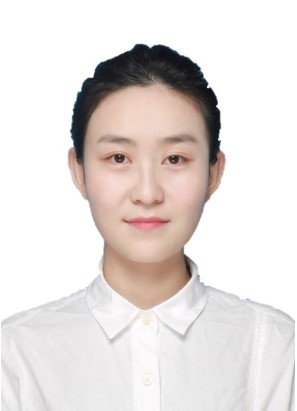

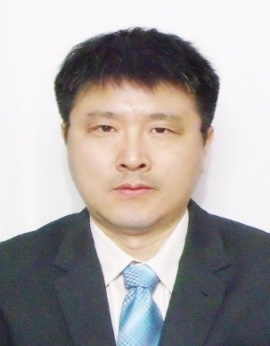
第一作者:韩婷婷 硕士(左)、徐煜翔 博士(中);通讯作者:魏建设 教授(右)





